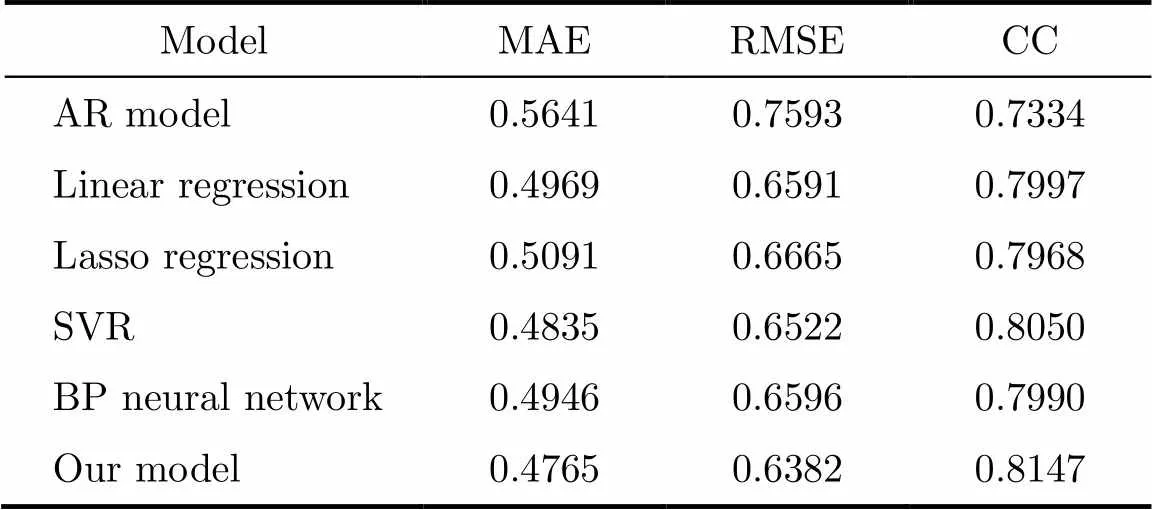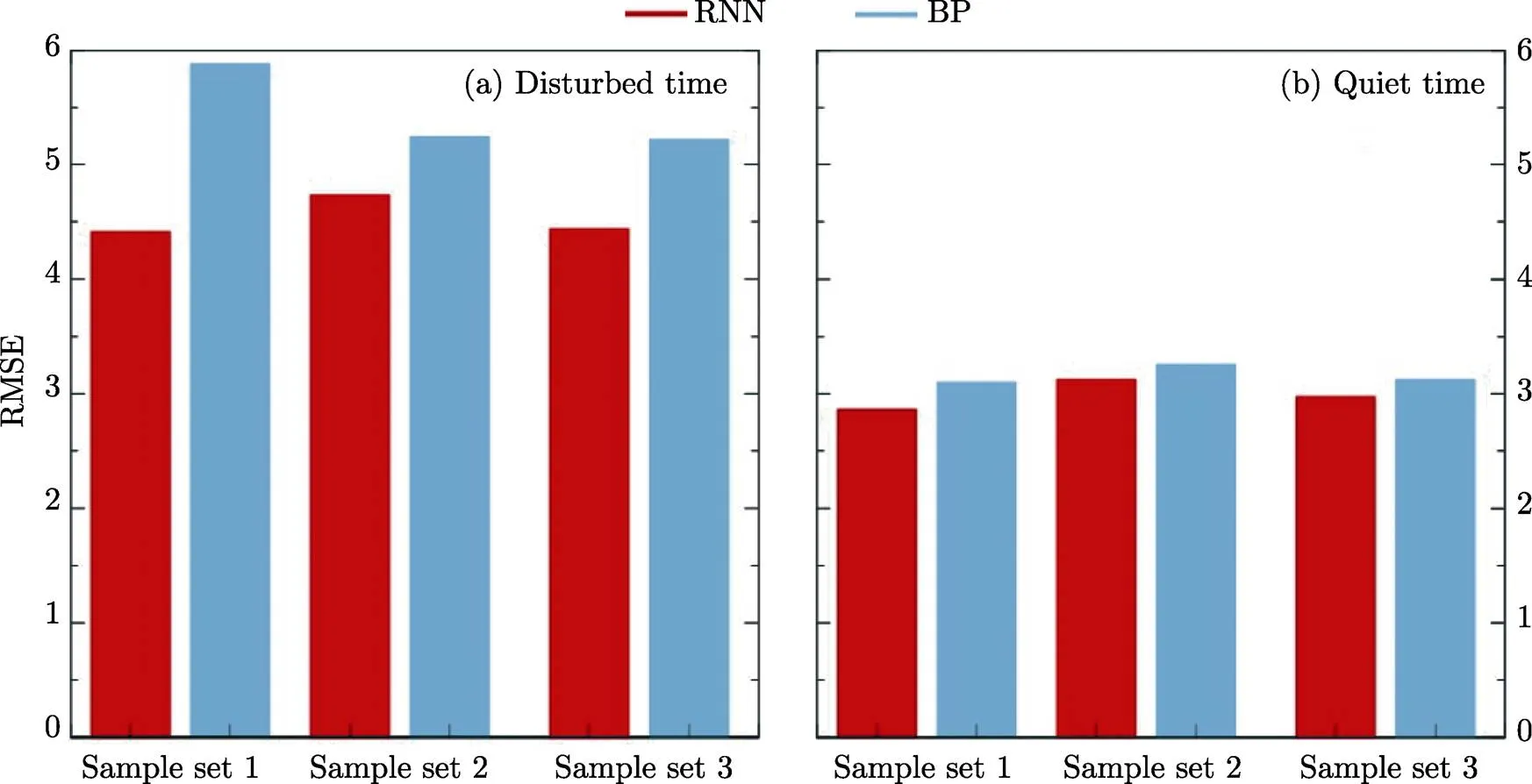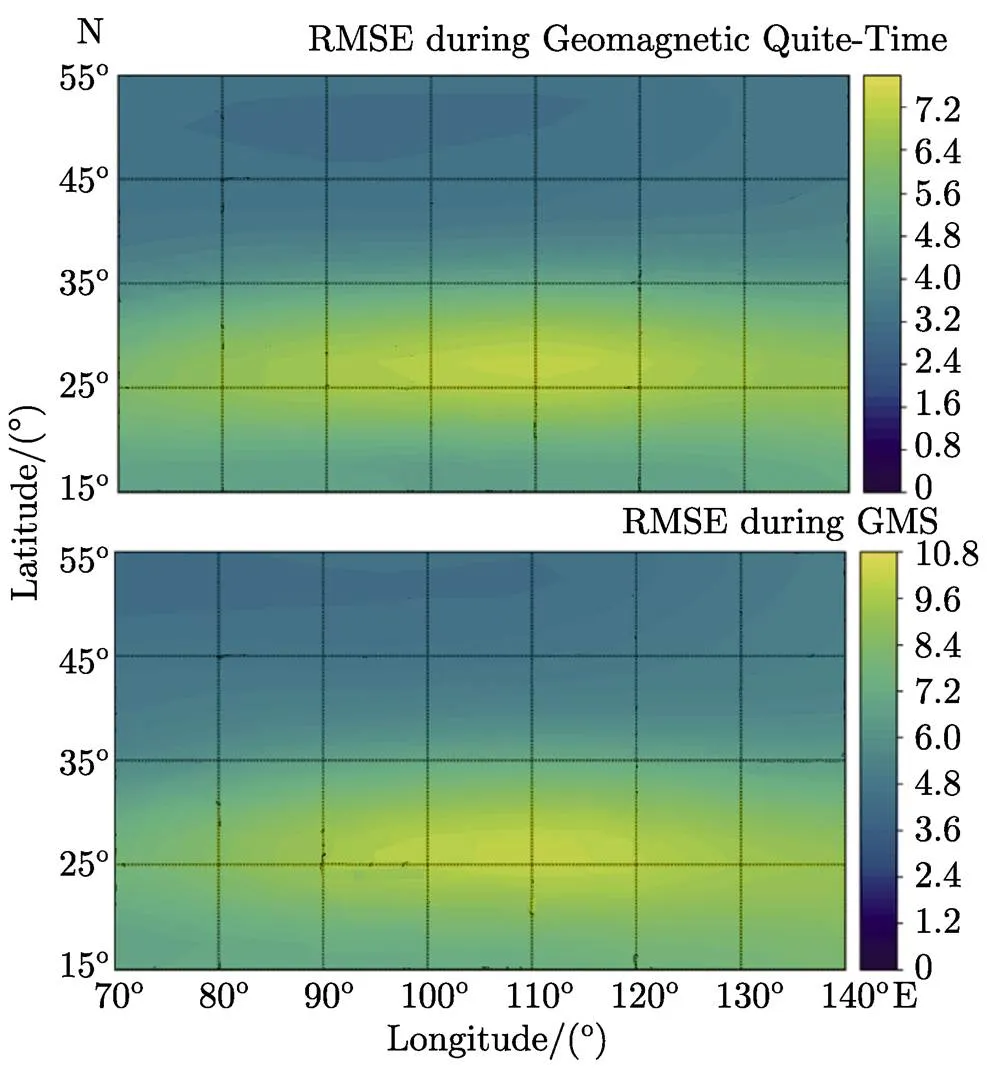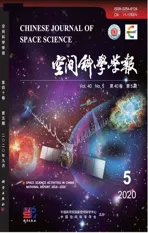Development of New Capabilities Using Machine Learning for Space Weather Prediction*
2020-04-16LIUSiqingCHENYanhongLUOBingxianCUIYanmeiZHONGQiuzhenWANGJingjingYUANTianjiaoHUQinghuaHUANGXinCHENHong
LIU Siqing CHEN Yanhong LUO Bingxian CUI Yanmei ZHONG Qiuzhen WANG Jingjing YUAN Tianjiao HU Qinghua HUANG Xin CHEN Hong
Development of New Capabilities Using Machine Learning for Space Weather Prediction*
LIU Siqing1,2,3CHEN Yanhong1,2LUO Bingxian1,2,3CUI Yanmei1,2ZHONG Qiuzhen1,2,3WANG Jingjing1,2YUAN Tianjiao1,2HU Qinghua3,4HUANG Xin4,5CHEN Hong5,6
1 (100190) 2 (100190) 3 (100049) 4 (300072) 5 (100101) 6 (430070)
With the development of space exploration and space environment measurements, the numerous observations of solar, solar wind, and near Earth space environment have been obtained in last 20 years. The accumulation of multiple data makes it possible to better use machine learning technique, which has achieved unforeseen results in industrial applications in last decades, for developing new approaches and models in space weather investigation and prediction. In this paper, the efforts on the forecasting methods for space weather indices, events, and parameters using machine learning are briefly introduced based on the study works in recent years. These investigations indicate that machine learning, especially deep learning technique can be used in automatic characteristic identification, solar eruption prediction, space weather forecasting for solar and geomagnetic indices, and modeling of space environment parameters.
Space weather forecasting, Machine learning, Deep learning
1 Automatic Characteristic Identification
In last decades, machine learning, especially deep learning pushed a big success in image and voice recognition. In space weather field, there are numerous solar images observations which provide abundant information about solar active region, magnitude, emission,. Sunspots are darker areas on the solar photosphere and most of solar eruptions occur in complex sunspot groups. The morphological or magnetic features of sunspot groups are mainly predictors of solar eruption forecasting. Currently, both identification and classification of sunspots are mainly carried out manually by experts, which is a subjective, time-consuming, and labor-intensive process. With the rapid accumulation of solar observation data, applying the machine learning method into solar active feature automatic recognition and solar eruption forecasting is explored.
The Mount Wilson classification scheme describes the spatial distribution of magnetic polarities in sunspot groups, which plays an important role in forecasting solar flares. This scheme considers bipolar sunspot groups as a basic type, and other types are regarded as deformations of the bipolar sunspot group. Statistically, large flares are more likely to occur in ARs with complex magnetic types, while the ARs of Alpha type have a lower probability of flare eruption. Using a Convolutional Neural Network (CNN) method, Fang.[1]developed an automatic procedure for the recognition of the predefined magnetic types in sunspot groups, which is based on the SDO/HMI SHARP data taken during the time interval 2010–2017 (Figure1). In the study, the sunspot magnetic type falls into three categories, the unipolar group, the bipolar group,and other complex multipolar groups, called-. There are three different models (A, B, and C) built, which take magnetograms, continuum images, and the two-channel pictures as input, respectively.

Fig.1 Schematic of the CNN structure for automatic recognition of magnetic type in sunspot groups[1]
The model results show that CNN has a productive performance in identification of the magnetic types in solar active regions (Table1). The best recognition result emerges when continuum images are used as input data solely, and the total accuracy exceeds 95%, for which the recognition accuracy of Alpha type reaches 98% while the accuracy fortype is slightly lower but maintains above 88%.
2 Machine Learning for Solar Eruption Forecasting
Solar eruptions, such as solar flare, Coronal Mass Ejections (CMEs),Solar Proton Event (SPE) can significantly affect near-Earth space environment and lead the subsequent effects on space assets, navigation and communication, and ground based electric power system. Therefore, it is very important to predict when solar eruption occurs. However, the current capability is still very limited.
The conventional solar flare forecasting models mainly rely on morphological or physical parameters extracted from active regions, but these parameters have limited forecasting capability. Instead of extracting the man-made physical parameters from the active region, Huang.[2]firstly try to apply the deep learning method to automatically dig out the forecasting patterns hidden in the data. In this manuscript, all active regions within ±30° of the central meridian for line-of-sight magnetograms observed by the SOHO/MDI and the SDO/HMI from 1996 April to 2015 October are collected, and the HMI data is fused with the MDI data to generate a big data set. Supported by this data set, a solar flare forecasting model by using the convolutional neural network (Figure2) is developed. The network consists of the convolutional layer, the nonlinear layer, the pooling layer, and the fully connected layer. The convolutional layer is used to extract forecasting patterns from input magnetograms. The nonlinear layer adds the nonlinear transform into the forecasting model. The pooling layer reduces the dimensionality of parameters in the network. And finally, the fully connected layer can provide high- level reasoning for the solar flare forecasting. This forecasting model can be used to forecast solar flares with the threshold of C, M, or X levels within the forecasting period of 6, 12, 24, or 48 h. The testing results of the forecasting model show that the performance of the proposed forecasting model is comparable to the state-of-the-art flare forecasting models.

Table1 Performance of the three models (A, B, and C), which take magnetograms, continuum images, and the two- channel pictures as input, respectively[1]

Fig.2 Structure of the convolutional neural network for solar flare forecasting[2]
It is well established that solar flares and Coronal Mass Ejections (CMEs) are powered by the free magnetic energy stored in volumetric electric currents in the corona, predominantly in Active Regions (ARs).The parameters in the Space-weather HMI Active Region Patches (SHARP) data from the Solar Dynamics Observatory/HMI observation of vector magnetic field are designed and generated to search for eruption-related signatures that can be further employed for predicting flares and CMEs. Wang[3]reported research done on the modification of these SHARP parameters with an attempt to improve flare prediction. The newly modified parameters are weighed heavily by magnetic Polarity In version Lines (PIL) with a high magnetic gradient, as suggested by Schrijver, by multiplying the parameters with a PIL mask. It is demonstrated that the number of the parameters that can well discriminate erupted and non-erupted ARs increases significantly by a factor of two, in comparison with the original parameters (as shown in Figure3). This improvement suggests that the high-gradient PILs are tightly related with solar eruption that agrees with previous studies. This also provides new data that possess potential to improve the machine-learning based solar flare prediction models.

Fig.3 Fisher ranking score (F-score) for each parameter. Black dots refer to the F-scores for the original SHARP parameters; red for the modified SHARP parameters.
Names of the parameters are on the-axis[3]
It is known that the properties of the Polarity Inversion Line (PIL) in solar Active Regions (ARs) are strongly correlated to flare occurrences. Wang.[3]suggestedthat the PIL mask, enclosing the PIL areas, had significant potential for improving machine learning based flare prediction models. Wang[4]adopted an unsupervised machine learning algorithm, Kernel Principle Component Analysis (KPCA), to directly derive features from the PIL mask and difference PIL mask (as shown in Figure4), and use those features to classify ARs into two categories, non-strong flaring ARs and strong-flaring (M-class and above flares) ARs, for time-in-advance from one hour to 72 h at a 1 hour cadence. The two best features are selected from the KPCA results to develop random forest classifiers for predicting flares, and the models are then evaluated and compared to similar models based on the-value (as suggested by Schrijver) and differencevalue. The results show that the features derived from the PIL masks by KPCA are effective in predicting flare occurrence, with overall better Fisher ranking scores and similar predictive statistics as the-value characteristics.
3 Forecasting of Solar and Geomagnetic Indices with Machine Learning
The forecasting of solar activity index, represented by Solar 10.7 cm radio flux (10.7), and geomagnetic activity, represented by,,,, is very important in space weather as they are widely used to describe the level of solar activity and geomagnetic fields. These indices are also the necessary inputs for many empirical and theoretical models in space environment research and application.

Fig.4 Radial magnetic field, Br, in the active region AR 12673 taken at 11:48 UT, 6 September 2017, and minimum and maximum of the image are –1000 Gs and 1000 Gs, respectively (a). Positive/negative magnetic polarity mask derived from the Br image (b). PIL mask derived from the Br polarity mask. The red squares enclose the sub-images with a size of 250×250 Pixel centered at the centroid of the PIL mask used in this study (c). Bottom right: the corresponding difference PIL mask at Y = 48 h (d)[4]
Traditional methods for10.7medium-term forecasting mainly include linear regression and empirical model based on the periodic variation. Wang.[5]discovered that forecasting errors of10.7are heteroscedastic, something that is not often considered in previous models. In addition, task correlation between different forecasting steps is ignored in current multistep-ahead forecast models. Wang[5]proposed a linear multistep forecasting model based on the correlation between different forecasting steps and the characteristic of heteroscedasticity (CH-MF model). Further, a variational Bayesian procedure was introduced to optimize the model. The performance of the proposed model is tested using10.7historical data. Figure5 shows the forecasting results in 2001, which indicates that the model is more effective and reliable than the linear regression model for10.7multistep forecasting task. Thus, it is reasonable to consider task correlation and to embed heteroscedasticity in10.7medium-term forecasting task.
For geomagnetic index, there are various studies related toforecasting. The artificial Neural Network (NN) is the most popular algorithm for short-timeforecasting. For example, Liu[6]developed a model forecasting1~3.5 h in advance using traditional NN, which is used in practical operations, and its forecast results are on the website of Space Environment Prediction Center (SEPC), Chinese Academy of Science. Tan.[7]proposed aforecasting model 1-hour in advance based on Long Short-Term Memory (LSTM). LSTM is developed from Recurrent Neural Networks (RNNs)[8]. LSTM can hold long-term memory and is helpful for learning sequential data. It can find complex nonlinear relationships in the data set. The input of the LSTM model forforecasting is made up of a time series of,and, with 6 h of time lag.is the Boyle Index[9]which is related to solar wind, whileis the solar wind dynamic pressure. Considering the data imbalance between storm and no-storm time, the three sub-model structure is designed (Figure6), which includes a classification model and two regression sub-models to improve the performance of geomagnetic storm forecasting.

Fig.5 Comparison between F10.7 observations and forecast values in 2001[5]
The effectiveness of deep learning inforecasting was compared with another fiveforecasting models dealing with the performance forforecasting and geomagnetic storm forecasting. Table 2 shows that the RMSE and MAE of the LSTM model are the smallest among the six models which are 0.4765 and 0.6382, respectively. In addition, CC is the largest among the six models which is 0.8147. The verification for geomagnetic storm forecasting also indicates the LSTM model can improve the prediction ability of the occurrence of geomagnetic storms (≥5). It is helpful using LSTM for deep learning to build theforecasting model.

Fig.6 Kp forecasting model structure (a) and the structure of the submodels A and O (b)[7]

Table2 Comparison on Root Mean Square Error (RMSE), Mean Absolute Error (MAE) and Correlation Coefficient (CC) of Kp forecasting among six models[7]
4 Modeling Space Environment Parameters Using Deep Learning
The ultimate purpose of space weather prediction is to give the accurate description of all kinds of space environment parameters, such as high energetic particle flux, magnetic field, electron density, plasma density, neutral density,. Many research and modeling works were performed considering the physical process and mechanism of space environment. They can give a relatively objective description of the long-term behavior of the system, while most of them are not appropriately used in space weather operation.
Therefore, empirical model is still a useful method to give the prediction of space weather parameters. Traditional NN method is also tried to make some parameters prediction. For ionosphere, the02(The critical frequency of ionospheric F2-layer) prediction model for 24 h in advance was established using traditional Back-Propagation (BP) network[10,11]. With more and more ionospheric measurements obtained, new skills in machine learning should be developed to give a more accurate forecast of ionosphere in global range, especially to improve the prediction during geomagnetic storms. Using IGS TEC products, solar 10.7cm flux index, geomagnetic index, solar wind speed and the southward components of interplanetary magnetic field, Yuan.[12]built a forecast model for Beijing station (40°N, 115°E) based on the deep learning Recurrent Neural Network (RNN). The Root Mean Square Error (RMSE) of the disturbed ionosphere TEC predicted by RNN model is lower than that of BPNN (Back Propagation Neural Network) model by 0.49~1.46 TECU (Figure7). The forecasting accuracy of ionospheric positive storm by RNN model is increased by 16.8% with solar wind parameters. Furthermore, the RMSE of RNN model on 31 strong TEC storm in 2001 and 2015 are less than that of BPNN model by 0.2 TECU, and the RMSE of RNN model is decreased by 0.36~ 0.47 TECU as solar wind parameters are added. The results indicate that RNN model is more reliable than BP model for short-term forecasting of TEC. Moreover, the adding of interplanetary solar wind parameters is helpful for predicting TEC positive storm.

Fig.7 Forecasting RMSE of TEC during magnetic disturbed time (a) and magnetic quite time (b) in Beijing.
Inputs are10.7, TEC andfor sample set 1,10.7, TEC,, solar wind speed and IMFfor sample set 2 and10.7, TEC, solar wind speed and IMFfor sample set 3[12]
Based on deep learning, a regional TEC prediction model 24 h in advance for Chinese region is also developed. The RMSE is 4.84 TECU during the quiet time, and 6.86 TECU during the geomagnetic disturbed time. The spatial distribution of the RMSE during geomagnetic quiet time and geomagnetic storm time are shown in Figure8.
High-energy electron at GEO is regarded as a killed electron as it can penetrate the components of satellites and result in an accumulated charge within the material, causing a deep dielectric charging and discharging process which can cause abnormal behavior in satellite systems[13]. Based on a deep learning method of Long Short-Term Memory (LSTM), Wei.[14]developed a model to predict the daily >2 MeV electron integral flux 1-day ahead at geostationary orbit. The experiment included different input combinations among geomagnetic indices and solar wind parameters. It showed that when the model takes daily >2 MeV electron integral flux, daily averaged magnetopause subsolar distance, and daily summedindex as inputs, the prediction efficiencies in 2008, 2009, and 2010 are 0.833, 0.896 and 0.911, respectively. This value reaches 0.900 for 2008, when hourly >2MeV electron integral flux, hourly magnetopause subsolar distance, and daily summedindex are taken as inputs. Figure9 shows the comparisons among the results of two categories of forecasting models and observations in 2008. The prediction efficiencies of the Persistence model and the 27-order Autoregressive model for the same tested time are 0.679 and 0.743, respectively. Therefore, the model developed based on the LSTM method can improve the prediction efficiency significantly for daily >2 MeV electron integral flux 1-day ahead at geostationary orbit.

Fig.8 RMSE of TEC regional prediction model during quiet time and geomagnetic storm time

Fig.9 Comparison among forecasting results of two categories of forecasting models and observations in 2008. The daily >2 MeV electron integral flux of 108cm–2·d–1·sr–1 over the entire time of each year is shown as a dark gray dashed curve. LSTM represents Long Short-Term Memory[14]
5 Other Potential Applications for Machine Learning

Another aspect of application is the similarity model for a recommendation in operational space weather prediction. If a similar event was dug out from historical data and recommended to forecasters, the forecasters can reference the event’s process and give a more reliable forecast for current event. A CME eventsimilarity model for the recommendation was now developing in Space Environment Prediction Center (SEPC) for better predicting the effect of the observed CME on Earth space.
Machine learning is not new to space weather. Traditional Neural Network has been used since1990 s. However, machine learning has never been as successful as it is now, which necessarily leads to new success and progress in space weather. The efforts introduced in this paper are just the beginning of the innovation. It is expectable that more helpful methods will be developed and used in automatically identifying events/features, space weather forecasting, modeling, and knowledge discovery in the future.

Fig.10 Radar map of variable weights for CME parameters from additive models
[1] FANG Y, CUI Y, AO X, Deep learning for automatic recognition of magnetic type in sunspot groups [J]., 2019:9196234
[2] HUANG X, WANG H, XU L,. Deep learning based solar flare forecasting model. I. Results for line-of-sight magnetograms [J].2019, 856:7
[3] WANG J, LIU S, AO X,Parameters derived from the SDO/HMI vector magnetic field data: potential to improve machine-learning-based solar flare prediction models [J]., 2019, 884:175
[4] WANG J, LIU S, AO X,. Solar flare predictive features derived from polarity inversion line masks in active regions using an unsupervised machine learning algorithm [J]., 202092:140
[5] WANG Z, HU Q, ZHONG Q, WANG Y. Linear multistep10.7forecasting based on task correlation and heteroscedasticity [J].2018, 5:863-874
[6] LIU Y, LUO B, LIU S, GONG J.Forecast models based on neural networks [J]., 2013, 19(2):70-80
[7] TAN Y, HU Q, WANG Z, ZHONG Q. Geomagnetic indexforecasting with LSTM [J]., 2018, 16:406-416
[8] GRAVES A. Supervised Sequence Labelling with Recurrent Neural Networks [M]. Heidelberg: Springer, 2012
[9] BOYLE C, REIFF P, HAIRSTON M. Empirical polar cap potentials [J].1997, 102(A1):111-125
[10] CHEN Y, XUE B, LI L. Forecasting of ionospheric critical frequency using neural networks [J]., 2005,25(2):99-103
[11] CHEN C, WU Z, SUN S,. Forecasting of ionospheric02in china using neural network [J].., 2011, 31(3):304-310
[12] YUAN T, CHEN Y, LIU S, GONG J. Prediction model for Ionospheric total electron content based on deep learning recurrent neural network [J]., 2018, 38(1):48-57
[13] LANZEROTTI L J, LAFLEUR K, MACLENNAN C G, MAURER D W. Studies of spacecraft charging on a geosynchronous telecommunications satellite [J]., 1998, 22(1):79-82
[14] WEI L, ZHONG Q, LIN R. Quantitative prediction of high-energy electron integral flux at geostationary orbit based on deep learning [J]., 2018, 16:903-916
P353
LIU Siqing, CHEN Yanhong, LUO Bingxian, CUI Yanmei, ZHONG Qiuzhen, WANG Jingjing, YUAN Tianjiao, HU Qinghua, HUANG Xin, CHEN Hong. Development of New Capabilities Using Machine Learning for Space Weather Prediction., 2020, 40(5): 875-883. DOI:10.11728/cjss2020.05.875
* Supported by National Natural Science Foundation of China (41574181)
March 15, 2020
E-mail: chenyh@nssc.ac.cn
杂志排行
空间科学学报的其它文章
- SJ-10 Recoverable Satellite for Space Microgravity Experiments*
- Taiji-1 Satellite Mission*
- Progress Report on Insight-HXMT: China’s First X-ray Astronomy Satellite
- Progress of the Quantum Experiment Science Satellite (QUESS) Micius Project
- Space Solar Physics in China*
- Current Status and Main Scientific Results of In-flight CSES Mission*
